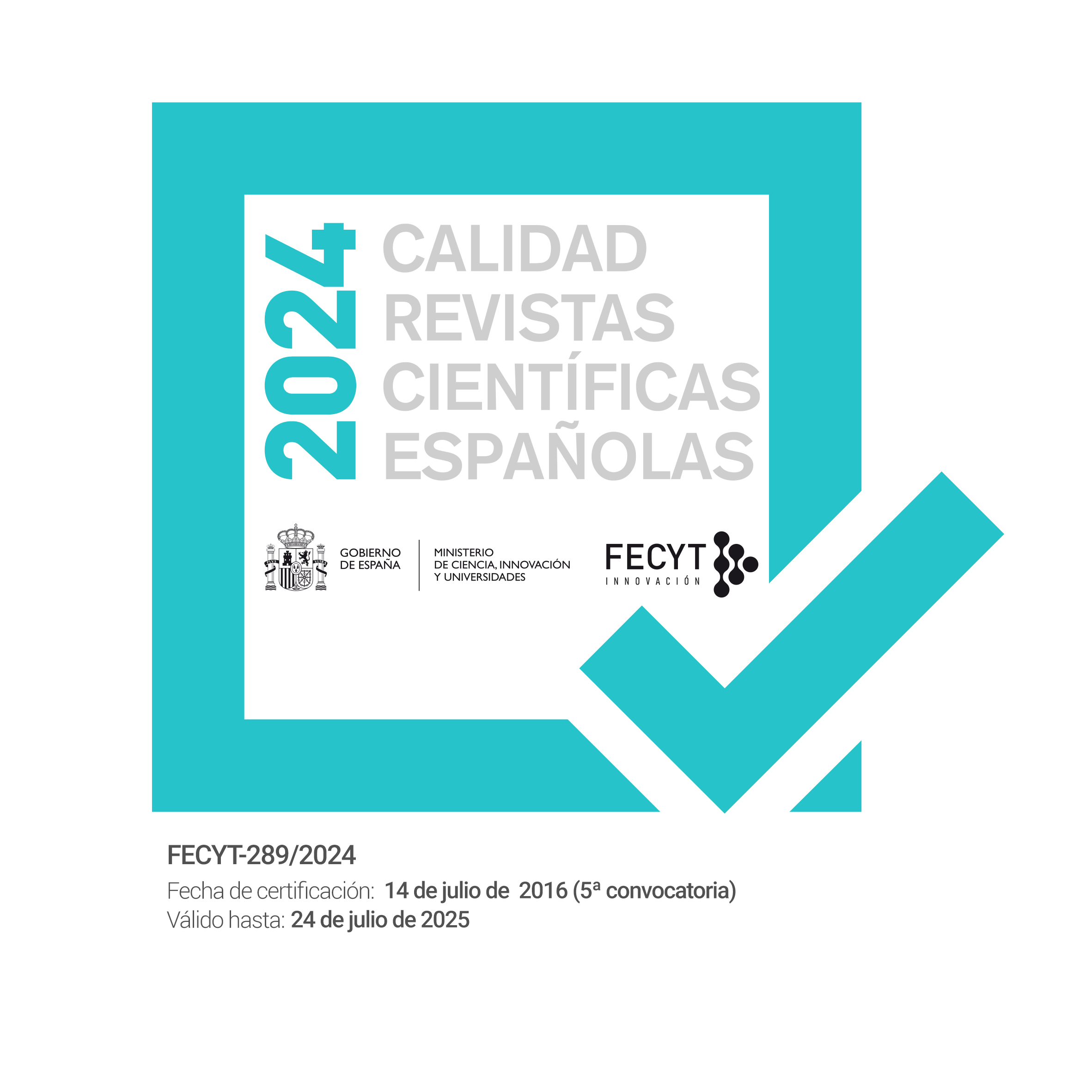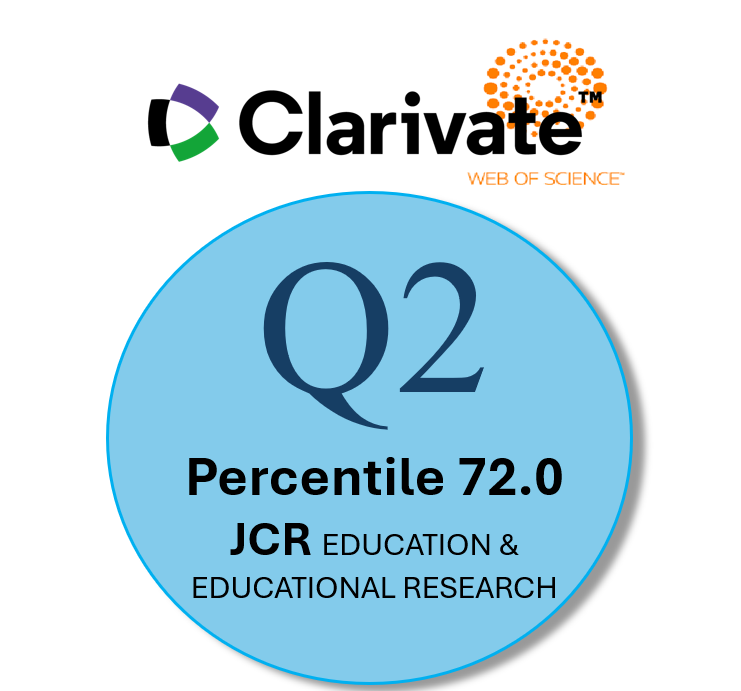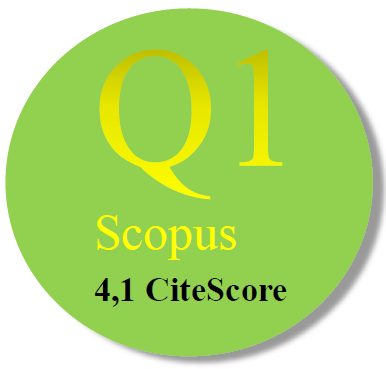Validation of the Spanish version of the 'Community of Inquiry' survey
Supporting Agencies
- Universidad Nacional de Educación a Distancia (UNED). Grupo de Innovación Docente CO-Lab (GID2016-30)
Abstract
We present the study of the reliability and validity of the 'Community of Inquiry' (CoI) survey in its Spanish version. The CoI model conceives teaching-learning in on-line environments as a process of inquiry, through which the participants collaborate in the discourse and critical reflection to build personal knowledge and reach a mutual understanding. Consequently, the CoI model identifies the presence of three dimensions: a) the cognitive presence, referred to the degree to which the participants are capable of constructing meaning and knowledge through continuous communication, reflection and discussion; b) the social presence, defined as the ability of participants to identify with the community, communicate and develop interpersonal relationships; c) the teaching presence, referred to the design, guidance and direction, on the part of the faculty, of cognitive and social processes with the purpose of achieving significant learning results in the students.
The validation of the survey in the context of Spanish distance learning shows satisfactory results from the point of view of construct validity and reliability as internal consistency, confirming the usefulness and interest of this instrument in investigations that seek to analyze and improve the development of educational processes through communities of inquiry.
Downloads
-
Abstract3022
-
ballesteros_et_al (Españo...1743
References
Akyol, Z., y Garrison, D. R. (2011). Understanding Cognitive Presence in an Online and Blended Community of Inquiry: Assessing Outcomes and Processes for Deep Approaches to Learning. British Journal of Educational Technology, 42(2), 233-250. https://doi.org/10.1111/j.1467-8535.2009.01029.x
Anderson, T. (2016, Enero 4). A Fourth Presence for the Community of Inquiry Model? Virtual Canuck [Blog post]. Recuperado de http://virtualcanuck.ca/2016/01/04/a-fourth-presence-for-the-community-of-inquiry-model
Arbaugh, J. B., Cleveland-Innes, M., Diaz, S. R., Garrison, D. R., Ice, P., Richardson, y Swan, K. P. (2008). Developing a community of inquiry instrument: Testing a measure of the Community of Inquiry framework using a multi-institutional sample. The Internet and Higher Education, 11(3-4), 133-136. https://doi.org/10.1016/j.iheduc.2008.06.003
Barberá, E. (2004). La educación en la red. Actividades virtuales de enseñanza aprendizaje. Barcelona: Paidós.
Biesta, G. (2017). El bello riesgo de educar. Cada acto educativo es singular y abierto a lo imprevisto. Madrid: Ediciones SM.
Campos, J, Brenes, O. y Solano, A. (2010). Competencias del docente de educación superior en línea. Revista Actualidades Investigativas en Educación, 10(3), 1-19. https://doi.org/10.15517/aie.v10i3.10141
Cleveland-Innes, M., y Campbell, P. (2012). Emotional presence, learning, and the online learning environment. The International Review of Research in Open and Distributed Learning, 13(4), 269-292. https://doi.org/10.19173/irrodl.v13i4.1234
Coll, C. y Engel, A. (2018). El modelo de Influencia Educativa Distribuida. RED. Revista de Educación a Distancia, 58(1), 5-37. Recuperado de http://www.um.es/ead/red/58/coll_engel.pdf
Comrey, A. L. y Lee, H. B. (1992). A first course in factor analysis. Hillsdale, NJ: Erlbaum.
Fernández, M. R. y Valverde, J. (2014). Comunidades de práctica: un modelo de intervención desde el aprendizaje colaborativo en entornos virtuales. Comunicar, 42, 97-105. https://doi.org/10.3916/C42-2014-09
Fueyo, A. y Hevia, I. (2017). Aprendizaje en red mediante comunidades de indagación en entornos de formación masiva online. Digital Education Review, 31, 116-130. Recuperado de http://revistes.ub.edu/index.php/der/article/view/16822
Garrison, D. R. (2011). About the Framework. An introduction to the Community Of Inquiry. The Community of Inquiry. Recuperado de http://www.thecommunityofinquiry.org/coi
Garrison, D. R., Anderson, T., y Archer, W. (1999). Critical inquiry in a text-based environment: Computer conferencing in higher education. The Internet and Higher Education, 2(2–3), 87–105. https://doi.org/10.1016/S1096-7516(00)00016-6
Gil-Jaurena, I., Domínguez, D., Izquierdo, A., y Morentin, J. (2018). Análisis de cursos online y a distancia desde el modelo “Community of Inquiry”. En J. Valverde-Berrocoso (Ed.), Campus Digitales en la Educación Superior. Experiencias e investigaciones (pp. 346–356), Cáceres: Servicio de Publicaciones de la Universidad de Extremadura.
Gil-Jaurena, I.; Domínguez Figaredo, D.; Theeraroungchaisri, A. y Yamada, T. (2018). “EdX Insights” Metrics from a Socio-Constructivist Pedagogical Perspective. Exploring the Micro, Meso and Macro. Proceedings of the European Distance and E-Learning Network- EDEN 2018 Annual Conference (pp. 53–60). Génova (Italia), 17–30 junio 2018.
González Boticario, J. et al. (2005). aLF: un entorno abierto para el desarrollo de comunidades virtuales de trabajo y cursos adaptados a la educación superior. I Jornadas TIC en la UNED. Madrid: UNED. Recuperado de http://e-spacio.uned.es/fez/view/bibliuned:96
González-Miy, D.; Herrera-Díaz, L. E. y Díaz-Camacho, J. E (2014). El modelo de comunidad de indagación. En I. Esquivel (coord.). Los Modelos Tecno-Educativos, revolucionando el aprendizaje del siglo XXI (pp. 67-78). México: Editorial Lulu Digital.
Gorsuch, R. L. (1983). Factor analysis, (2nd edition). Hillsdale,NJ: Lawrence Erlbaum.
IGI Global (2017). What is socio-constructivism. Recuperado de https://www.igi-global.com/dictionary/socio-constructivism/27547
Jézégou, A. (2010). Community of Inquiry in E-learning: A Critical Analysis of Garrison and Anderson Model. Journal of Distance Education. Revue de l’Éducation à Distance, 24(3), 1-18. Recuperado de http://www.ijede.ca/index.php/jde/article/view/707
Kass, R. A. y Tinsley’s, H. E. A. (1979). Factor analysis. Journal of Leisure Research, 11, 120-138.
Kovanović, V., Joksimović, S., Poquet, O., Hennis, T., Čukić, I., Vries, P., Hatalae, M., Dawson, S., Siemens, G., y Gašević, D. (2018). Exploring communities of inquiry in Massive Open Online Courses. Computer & Education (119), 44-58. https://doi.org/10.1016/j.compedu.2017.11.010
Lam, J. (2015). Autonomy presence in the extended community of inquiry. International Journal of Continuing Education and Lifelong Learning, 8(1), 39-61.
Lloret-Segura, S., Ferreres-Traver, A., Hernández-Baeza, A., y Tomás-Marco, I. (2014). El Análisis Factorial Exploratorio de los Ítems: una guía práctica, revisada y actualizada. Anales de Psicología, 30(3), 1151-1169.
Morgan, T. (2011). Online Classroom or Community-in-the-Making? Instructor Conceptualizations and Teaching Presence in International Online Contexts. International Journal of E-Learning & Distance Education, 25(1). Recuperado de http://www.ijede.ca/index.php/jde/article/view/721/
Nunnally, J.C. (1978). Psychometric Theory (2nd edition). New York: McGraw-Hill.
Olpak, Y. Z., y Kiliç Çakmak, E. (2018). Examining the Reliability and Validity of a Turkish Version of the Community of Inquiry Survey. Online Learning, 22(1). http://dx.doi.org/10.24059/olj.v22i1.990
Padilla, S.; Ortiz, L.; y López, C. (2015). Comunidades de aprendizaje en línea. Análisis de las interacciones cognitivas, docentes y afectivas. Apertura, 7(1), 108-127. Recuperado de http://www.udgvirtual.udg.mx/apertura/index.php/apertura/article/view/632
Pool, J., Reitsma, G., y van den Berg, D. (2017). Revised community of inquiry framework: Examining learning presence in a blended mode of delivery. Online Learning, 21(3), 153-165. http://dx.doi.org/10.24059/olj.v21i3.866
Richardson, J. C., Maeda, Y., Lv, J., y Caskurlu, S. (2017). Social presence in relation to students’ satisfaction and learning in the online environment: A meta-analysis. Computers in Human Behavior, 71, 402-417. https://doi.org/10.1016/j.chb.2017.02.001
Shea, P. y Bidjerano, T. (2009). Community of inquiry as a theoretical framework to foster “epistemic engagement” and “cognitive presence” in online education. Computers & Education, 52(3), 543-553. https://doi.org/10.1016/j.compedu.2008.10.007
Shea, P. y Bidjerano, T. (2010). Learning presence: Towards a theory of self-efficacy, self-regulation, and the development of a communities of inquiry in online and blended learning environments. Computers & Education, 55(4), 1721–1731. https://doi.org/10.1016/j.compedu.2010.07.017
Stenbom, S., Jansson, M., y Hulkko, A. (2016). Revising the Community of Inquiry Framework for the Analysis of One-To-One Online Learning Relationships. The International Review Of Research In Open And Distributed Learning, 17(3). https://doi.org/10.19173/irrodl.v17i3.2068
Swan, K. P., Richardson, J.C., Ice, P., Garrison, D. R, Cleveland-Innes, M., y Arbaugh, J. B. (2008). Validating a Measurement Tool of Presence in Online Communities of Inquiry. E-mentor, 2(24). Recuperado de http://www.e-mentor.edu.pl/_xml/wydania/24/543.pdf
Szeto, E. (2015). Community of Inquiry as an instructional approach: What effects of teaching, social and cognitive presences are there in blended synchronous learning and teaching? Computers & Education, 81, 191-201. https://doi.org/10.1016/j.compedu.2014.10.015
Yu, T. y Richardson, J. (2015). Examining reliability and validity of a Korean version of the Community of Inquiry instrument using exploratory and confirmatory factor analysis. The Internet and Higher Education, 25, 45-52. https://doi.org/10.1016/j.iheduc.2014.12.004
Las obras que se publican en esta revista están sujetas a los siguientes términos:
1. El Servicio de Publicaciones de la Universidad de Murcia (la editorial) conserva los derechos patrimoniales (copyright) de las obras publicadas, y favorece y permite la reutilización de las mismas bajo la licencia de uso indicada en el punto 2.
2. Las obras se publican en la edición electrónica de la revista bajo una licencia Creative Commons Reconocimiento-NoComercial-SinObraDerivada 3.0 España (texto legal). Se pueden copiar, usar, difundir, transmitir y exponer públicamente, siempre que: i) se cite la autoría y la fuente original de su publicación (revista, editorial y URL de la obra); ii) no se usen para fines comerciales; iii) se mencione la existencia y especificaciones de esta licencia de uso.
3. Condiciones de auto-archivo. Se permite y se anima a los autores a difundir electrónicamente las versiones pre-print (versión antes de ser evaluada) y/o post-print (versión evaluada y aceptada para su publicación) de sus obras antes de su publicación, ya que favorece su circulación y difusión más temprana y con ello un posible aumento en su citación y alcance entre la comunidad académica. Color RoMEO: verde.













